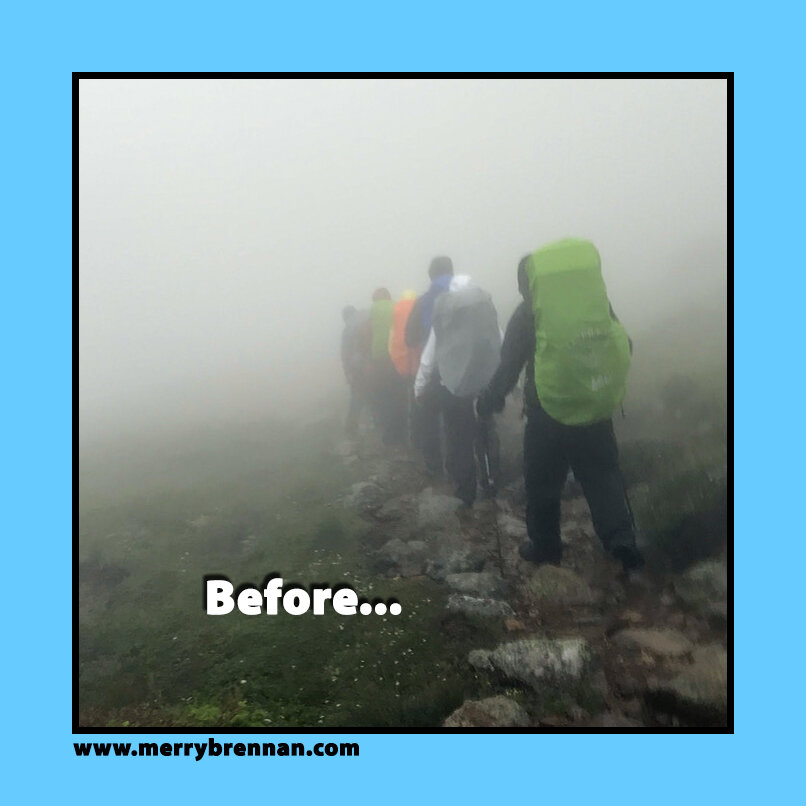5 Must-Knows for Hiking First Aid



Whether you’re a master climber or taking your first tentative steps on a trail, things can go from wonderful to horrible in a minute. I should know. Two days into a fabulous backpack excursion in New Hampshire’s White Mountains, I slipped on wet rocks and broke my wrist. Luckily, I had someone with me who crafted an awesome makeshift splint, and I was able to hike the four miles down for transport to a hospital.
Accidents like this do happen. But you can avoid many common hiking injuries and setbacks with a little knowledge and planning. Here are five ways to embrace “prevention first” on any outdoor adventure, large or small.
1. Footwear to deter BLISTERS
It’s not broken bones or dreaded diseases that derail the most hikers, it’s blisters. While you can’t always stop these painful, infection-prone skin maladies, you can try to preclude them.
Wear proper socks and boots.
Buy hiking boots a ½ size bigger than your regular size, break them in before tackling tough trails, and invest in good moisture-wicking socks (many people prefer a wool blend).Keep feet dry.
Damp socks are a recipe for blisters, so carry an extra pair and swap them out if your feet get wet.Treat early.
If you feel even the tiniest “hot spot” on your foot – a red, tender area from friction – stop and cover it with mole skin or donut band aid (which you should have in your first aid kit, see below). If not, use duct tape (which you should also always carry).Proactively pop.
If you’re too late and the blister bubble is already huge, rather than wait for it to pop on its own and risk infection, it may be safer to pop it with a sterile needle, use antibiotic cream, then cover it with sterile bandages.
2. Fluids to avert DEHYDRATION
If you don’t drink enough while hiking, you’ll feel more fatigued, overheated, or worse. Dehydration can lead to heat exhaustion or heat stroke, serious issues that are totally preventable.
Over stock.
Whether you use a backpack bladder or other containers, always carry more water than you think you’ll need – at least 3-4 liters a day (the average water bottle is 1 liter.)Over drink.
Thirsty or not, stop every 30 minutes and take a drink.Don’t run dry.
Think about carrying a water filter in case you run out of water. I use the Katadyn BeFree 1.0 Liter Water Filter.Treat for heat.
At any sign of being overheated (headache, fatigue, muscle weakness, nausea, clammy skin), find a shaded area to sit, put a wet bandana on your neck, eat a salty snack, and drink more fluids (add a sports drink powder or electrolyte tablet to your water.)Recognize emergencies.
Confusion, dizziness, fainting or seizure are serious symptoms that require emergency medical treatment.
3. Safety from SUN EXPOSURE
From painful sunburn to life-threatening skin cancer, there are many reasons to make sure you minimize your risk from the sun’s powerful rays. The higher you hike, the more important: UV exposure at 6000-feet elevation is almost 25% greater than at sea level!
Cover up.
Weat a hat, sunglasses and sun-protective clothing.Use sunscreen/lip balm.
As a general rule, use at least 30 SPF and reapply every two hours.
NOTE: although this focuses on sunny-day outings, you also should be prepared with rain gear in your backpack.
4. Protection from BUGS & PLANTS
If you’ve never itched like crazy from mosquito bites or poison ivy, or pulled a tick off your skin, count your blessings. Try to keep it that way through proper clothing and repellants.
Pre-spray clothing and gear.
To prevent bites from mosquitoes and ticks (and the growing list of diseases they carry), pre-spray hiking clothes, boots, hats, and packs with Permethrin, which kills many pests. Do NOT use Permethrin directly on your skin. Permethrin treatment will last up to six washings.Protect your skin.
For your skin, experts recommend repellants with 30% DEET or 30% Oil of Lemon Eucalyptus.Dress right.
Wear light-colored clothing to make it easier to spot tiny ticks on your clothes and tuck your pants into your socks.Mosquito hat.
Purchase netted hats to protect your face when bugs are at their worst.Know the flora.
Find out which poisonous plants live in the areas you hike and learn to ID them in all seasons. For instance, poison ivy is called the “master of disguises” because its “leaves of three” can be many different colors; the plant grows as a vine, shrub, or groundcover; and its “hairy rope” of a vine can spread its itchy urushiol oil even in frosty winter.
5. “Just in Case” PRECAUTIONS
The above four hiking hazards are the most common. But even with the best preparation, accidents happen. So, add a bit more safety insurance to your outing.
Have easy-to-find ID.
If you’re unconscious or non-verbal, ID locked in your smartphone is of little use to rescuers who don’t know your code. Make sure your name, address, emergency contact, and any critical medical info is written where others can find it.Carry a first aid kit.
A variety are available to buy, or you can make your own. Include antibiotic ointment, anti-inflammatory medication, electrolyte tablets, insect sting remedy, band-aids, bandages, gauze, tweezers and alcohol wipes, I also add a long strip of duct tape wrapped around itself, which can shore up packs, fix broken boots, secure splints and so much more. Store everything in a waterproof bag or container.Learn basic first aid.
There are a number of online and in-person classes offered by the American Red Cross, local park systems, and sporting goods stores.
What else do you do to stay healthy on the trail?

